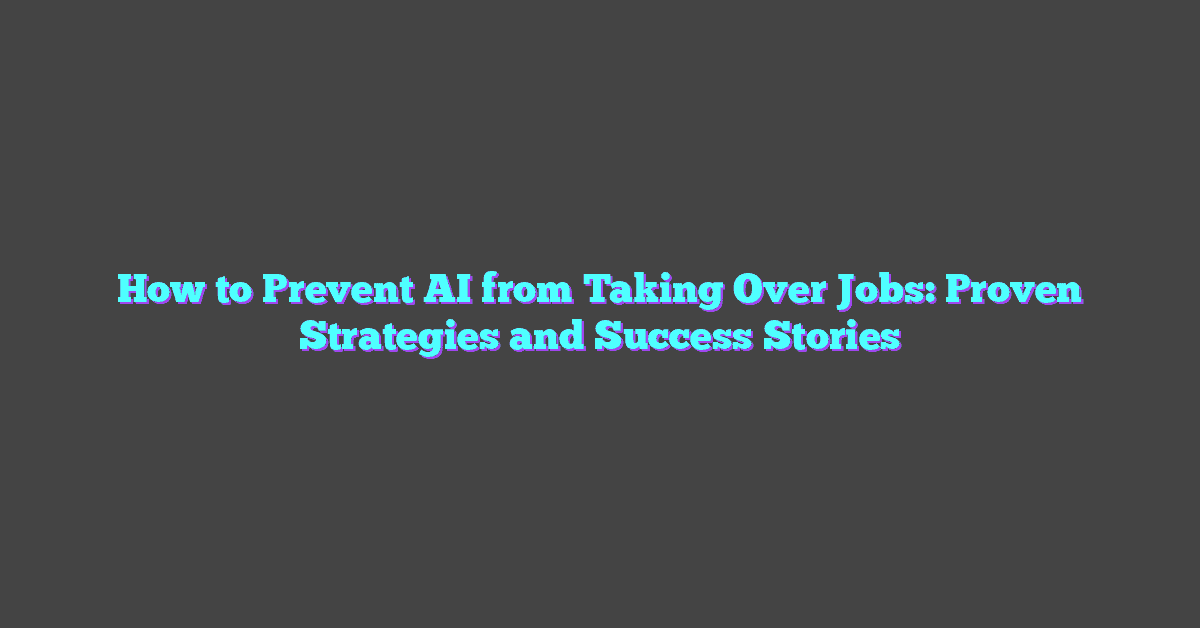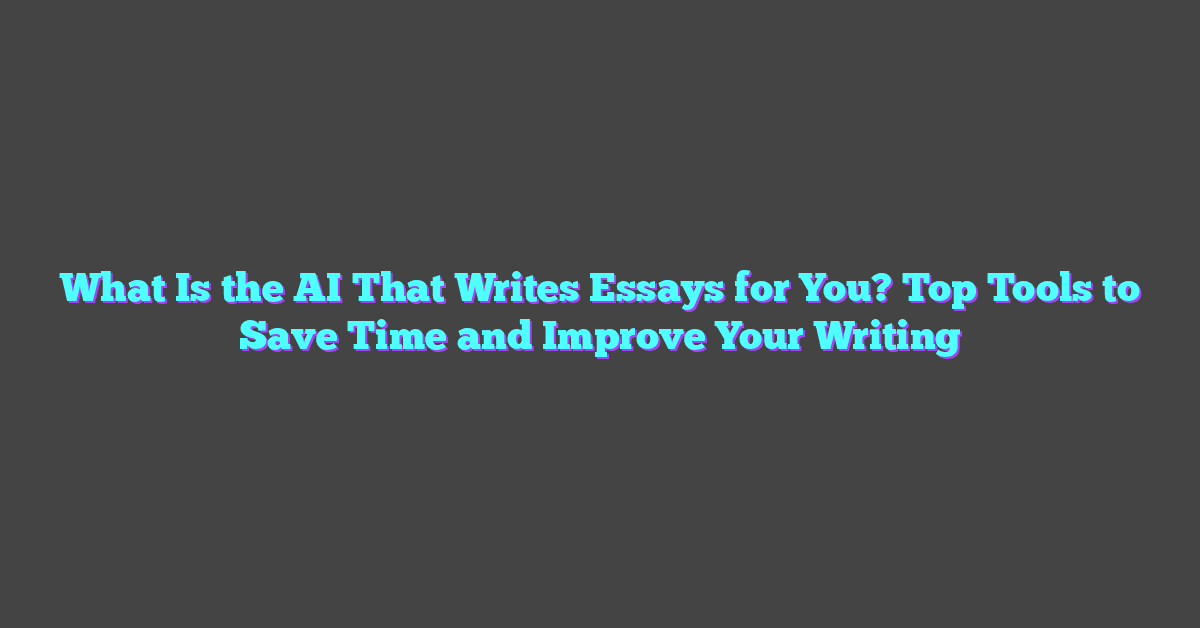AI writing tools have taken the world by storm, and ChatGPT seems to be leading the pack. Whether you’re crafting blog posts, brainstorming ideas, or even tackling tricky emails, this tool promises to make writing easier and faster. But with so many options out there, it’s natural to wonder if ChatGPT truly stands out or if it’s just another overhyped tech trend.
I’ve spent some time exploring its features, testing its capabilities, and seeing how it stacks up against other tools. From its ability to generate creative content to how it handles more technical tasks, there’s a lot to unpack. So, is ChatGPT really the best AI writing tool out there? Let’s dive into what it offers and see if it lives up to the buzz.
What Is ChatGPT?
ChatGPT is an advanced AI language model developed by OpenAI, built on the GPT (Generative Pre-trained Transformer) architecture. It processes and generates human-like text based on input prompts. By leveraging deep learning techniques, particularly transformer neural networks, it identifies patterns in vast amounts of text data to create coherent and contextually relevant responses.

The core technology behind ChatGPT is the GPT-4 architecture. It’s trained on a diverse dataset that includes books, articles, and websites, enabling it to understand and mimic natural language effectively. This makes it suitable for tasks like drafting documents, answering questions, or creating personalized messages.
Unlike traditional rule-based systems, ChatGPT works probabilistically, predicting the most likely sequence of words based on the given input. For example, if you ask how to write a blog introduction, it analyzes the request and pulls learned knowledge to formulate a detailed response. Its adaptive nature allows it to support complex tasks and conversations intuitively.
ChatGPT has gained popularity because of its accessibility and versatility. With applications in content creation, education, customer support, and beyond, it bridges the gap between technical AI capabilities and practical user needs.
Key Features Of ChatGPT
ChatGPT stands out due to its advanced capabilities and flexibility, making it a preferred AI writing tool. Below, I explore its key features through the lens of natural language processing and its applications in content creation.
Natural Language Understanding
ChatGPT demonstrates a deep understanding of natural language, thanks to its GPT-4 architecture. It interprets context, intent, and subtleties within prompts to deliver coherent and relevant responses. For instance, when asked to draft a persuasive email or summarize a complex article, it precisely tailors the output while retaining the input’s original meaning. Its ability to mimic human-like comprehension reduces the time spent on correcting or refining text.
Versatility In Writing Styles
ChatGPT adapts seamlessly to various writing styles. Whether crafting engaging blog posts, professional emails, or creative stories, it adjusts tone, structure, and vocabulary to match the desired format. For example, it can generate straightforward technical documentation or casual social media captions with minimal user input. This versatility supports diverse content creation needs across industries and platforms.
Ease Of Use
The intuitive interface makes ChatGPT accessible regardless of technical expertise. Inputting a prompt and receiving detailed, well-structured text feels almost instant. This simplicity is beneficial for both AI novices and experienced users, particularly in time-constrained tasks. Features like customizable prompts and context retention further streamline the process, letting users focus on refining rather than generating content.
Continuous Improvements
ChatGPT benefits from OpenAI’s commitment to iterative upgrades. It evolves through regular enhancements to its algorithms, enabling better contextual understanding, fewer errors, and richer outputs. For instance, updates like increased contextual token limits improve its ability to generate longer, more complex outputs without losing coherence. These advancements strengthen its position as a top-tier AI writing tool.
Strengths Of ChatGPT
ChatGPT’s strengths lie in its ability to blend natural language processing with practical applications, making it a powerful AI writing tool. Its high-quality content generation, efficiency, and versatility showcase the sophistication of modern AI systems.
Content Quality And Relevance
ChatGPT consistently produces contextually accurate and coherent content. By leveraging GPT-4’s extensive training on diverse datasets, it excels in understanding prompts and crafting outputs that match the input’s intent. I find its ability to adapt tone and style equally impressive, whether generating formal documentation or casual blog posts. For example, when I provided a technical topic like “Machine Learning Fundamentals,” its response was detailed, clear, and tailored to an audience familiar with the subject. Similarly, for non-technical content, it maintained conversational relevance without losing depth.
Time Efficiency
ChatGPT significantly reduces the time spent on drafting and editing content. Its ability to complete tasks like summarizing articles or creating outlines within seconds allows users to focus on refining ideas rather than worrying about structure and flow. As someone who values productivity, I often use it to brainstorm ideas or create initial drafts. For example, outlining an entire blog post on “Emerging Trends in AI” took less than a minute, offering me a strong foundation to build upon. This rapid turnaround highlights its practicality for creators balancing multiple responsibilities.
Wide Range Of Applications
ChatGPT’s flexibility extends across industries and user needs, from content creation to education and beyond. I can rely on it for diverse tasks, such as generating technical reports, crafting marketing copy, or even assisting with customer support queries. Its ability to provide tailored responses also benefits niche use cases, like drafting AI-focused research abstracts or creating tutorial scripts for machine learning topics. This adaptability makes it a valuable tool for professionals and enthusiasts alike, covering both technical and creative writing scenarios.
Limitations Of ChatGPT
While ChatGPT performs impressively in many areas, it comes with certain limitations that could impact its practicality for some users. I’ll address these challenges based on my expertise in AI and machine learning, along with my experience in content creation.
Lack Of Human Creativity
ChatGPT lacks authentic human creativity, relying solely on patterns found in its training data. It cannot truly innovate or formulate original ideas because it generates content based on probabilities rather than genuine inspiration. For instance, when tasked with writing a unique story, the output often mirrors existing structures and narratives. This limitation makes it less suitable for highly creative fields like poetry or conceptual storytelling.
Potential For Factual Errors
The probabilistic nature of ChatGPT’s responses increases the likelihood of factual inaccuracies. Although it often generates reliable information, it’s occasionally incorrect or outdated, as its knowledge only extends up to 2023. For example, in technical documentation or niche topics, it may produce statements that sound plausible but lack accuracy. Users must fact-check its outputs to ensure content reliability, especially in domains like science or journalism.
Cost Considerations
ChatGPT’s subscription-based pricing, such as ChatGPT Plus for GPT-4 access, can be a barrier for some content creators or professionals. While the free version offers basic capabilities, paid plans are often essential to unlock its full potential. These costs accumulate for heavy usage, making it less accessible to individuals or small businesses with limited budgets. That said, its efficiency and output quality might justify the price for users with significant content demands.
Competitors To ChatGPT
Numerous tools compete with ChatGPT in the AI writing space, each offering diverse features tailored to specific user needs. While some focus on generating creative text, others excel in technical precision or affordability. Below, I detail prominent GPT alternatives and traditional writing tools.
GPT Alternatives
- Google Bard
Google Bard, powered by Google’s LaMDA (Language Model for Dialogue Applications), emphasizes conversational capabilities over extensive text generation. Its strengths lie in generating responses for queries and contextual searches rather than developing long-form content. While Bard provides relevant information quickly, it doesn’t yet match ChatGPT’s adaptability in creating diverse text types like creative writing or structured documents.
- Jasper AI
Jasper AI, previously Jarvis, specializes in content marketing and advertising. I admire its pre-built templates for tasks such as blog posts, ad copy, and product descriptions. It integrates well with SEO tools, making it a preferred option for marketers. However, its performance in technical content creation doesn’t match ChatGPT’s depth.
- Writesonic
Writesonic offers a user-friendly interface suitable for quick content generation. It’s ideal for tasks like email drafts, social media captions, and short articles. While its outputs can be polished, I find its contextual understanding and flexibility less advanced compared to ChatGPT, especially when handling complex prompts.
- Bing AI (based on GPT-4)
Microsoft’s Bing AI incorporates GPT-4 with web search capabilities for real-time data generation. It’s useful for providing up-to-date information and search-driven tasks. However, the limitation comes in creative writing or stylistic adaptation since it prioritizes factual accuracy over versatility.
Traditional Writing Tools
- Grammarly
Grammarly focuses on advanced grammar checks, tone suggestions, and readability improvements rather than full-scale text generation. I often use it alongside AI writing tools like ChatGPT to refine outputs. Its analytical capabilities complement AI-driven generation, but it doesn’t produce original content.
- Scrivener
Scrivener excels in managing complex writing projects, such as novels or research papers. It offers structured tools for organizing ideas or chapters. Though not an AI tool, it remains a favorite among writers when paired with an AI writer like ChatGPT for drafting.
- Microsoft Word/Google Docs
These traditional tools dominate the drafting and editing processes. While they can integrate with AI assistants or offer basic text suggestions, they lack the deep contextual understanding and language production capabilities found in modern AI systems.
- Hemingway Editor
The Hemingway Editor improves text readability by highlighting complexity, passive voice, and adverb overuse. It’s great for writers looking to simplify language but remains a secondary tool when generating ideas or drafting content compared to ChatGPT.
Competitors in the AI writing industry vary in specialization, with GPT-based tools like Jasper AI and Writesonic focusing on niche applications and traditional options like Grammarly or Scrivener catering to editing or organization tasks.
Final Verdict: Is ChatGPT The Best AI Writing Tool?
ChatGPT stands out as a powerful and versatile AI writing tool. Its ability to generate coherent, contextually relevant, and diverse text makes it suitable for tasks ranging from casual blog posts to detailed technical documentation. As someone who’s deeply passionate about artificial intelligence and content creation, I find its seamless integration of advanced machine learning techniques with practical applications impressive. Based on GPT-4’s architecture, it leverages deep learning to produce natural and meaningful content that adapts to various styles and contexts.
The flexibility ChatGPT offers is a significant advantage. It shifts effortlessly between formal tones for professional documents and conversational styles for social media content. This adaptability appeals to creators looking to streamline workflows without compromising quality. I’ve seen firsthand how it simplifies content ideation, dramatically shaving hours off otherwise labor-intensive processes. Tasks, including drafting long-form articles or polishing email copy, become far more efficient with ChatGPT’s support.
However, being heavily involved in AI, I recognize that perfection isn’t yet achievable for AI tools, ChatGPT included. Despite producing high-quality outputs, it can’t replace the nuanced creativity and authenticity of human writing. Its reliance on training data limits its originality, especially in highly creative or imaginative projects. Moreover, there’s a necessity for thorough fact-checking since the model sometimes generates content with factual inaccuracies—a common limitation in probabilistic systems.
When evaluating ChatGPT in comparison to competitors, I see it as an all-rounder, bridging content creation and technical proficiency. Tools like Jasper AI and Writesonic specialize in specific industries or tasks, while ChatGPT maintains broader applications. For anyone like me, pairing a passion for AI with diverse content creation needs, ChatGPT delivers immense value. Although subscription costs may deter some, the return on investment in terms of saved time and enhanced productivity justifies it for those with high content demands.
Conclusion
ChatGPT has certainly made its mark as a versatile and powerful AI writing tool. It offers impressive capabilities that streamline content creation and adapt to a variety of needs, making it a valuable asset for many users. While it’s not without its limitations, the time and effort it saves can’t be overlooked.
Whether you’re drafting professional documents or brainstorming creative ideas, ChatGPT provides a reliable starting point. Its ability to enhance productivity makes it worth considering, especially if you’re looking for an efficient way to tackle your writing tasks.
Frequently Asked Questions
What is ChatGPT and how does it work?
ChatGPT is an advanced AI language model developed by OpenAI, based on the GPT-4 architecture. It processes and generates human-like text by using deep learning to predict word sequences based on user input. Unlike traditional rule-based systems, it works probabilistically and can handle various tasks such as drafting documents, answering questions, or generating creative content.
What makes ChatGPT different from traditional writing tools?
Unlike traditional tools, ChatGPT doesn’t rely on fixed rules. Instead, it uses deep learning techniques to generate content that mimics natural language. It adapts to different writing styles and provides contextually relevant responses, making it versatile for tasks like creative writing, technical documentation, or casual communication.
What are the key features of ChatGPT?
ChatGPT offers advanced natural language understanding, contextual accuracy, and adaptability to various writing styles. It simplifies tasks such as blog writing, email drafting, and customer support. Its user-friendly interface and continuous updates make it accessible and reliable for users with varying technical expertise.
What are the limitations of ChatGPT?
While ChatGPT performs well in generating readable and relevant text, it lacks human creativity and authenticity. It depends on training data patterns, which can limit its effectiveness in highly creative fields. Additionally, its responses may include factual errors, requiring users to fact-check outputs carefully.
Is ChatGPT suitable for all types of writing tasks?
ChatGPT is highly versatile and can handle a wide range of tasks, from technical reports to casual social media posts. However, it may not be ideal for projects requiring unique creative insights or highly specialized content due to its dependence on existing data patterns.
Are there alternatives to ChatGPT?
Yes, alternatives include Google Bard, Jasper AI, Writesonic, and Bing AI, each tailored to specific needs. For example, Google Bard is great for conversations, while Jasper AI excels in content marketing. Other traditional tools like Grammarly are better suited for editing and proofreading rather than content generation.
How does ChatGPT improve productivity?
ChatGPT reduces the time spent on drafting and editing by generating coherent and relevant text quickly. It allows users to focus on refining ideas rather than starting from scratch, making workflows more efficient in industries like content creation and customer support.
Is ChatGPT worth the subscription cost?
For users with high content demands, ChatGPT’s time-saving and productivity-enhancing features can justify the subscription cost. It delivers high-quality outputs, although users should weigh the expense against their specific needs and whether they require frequent content generation.
Can ChatGPT completely replace human writers?
No, ChatGPT cannot fully replace human writers. While it generates content efficiently and adapts well to different styles, it lacks the nuanced creativity and originality of human writing. It’s best used as a support tool rather than a complete substitute.
Does ChatGPT guarantee accuracy in its responses?
No, ChatGPT may produce factual inaccuracies as it operates probabilistically and relies on its training data. Users should always fact-check outputs, especially in technical or niche topics, to ensure reliability and correctness in the final content.




